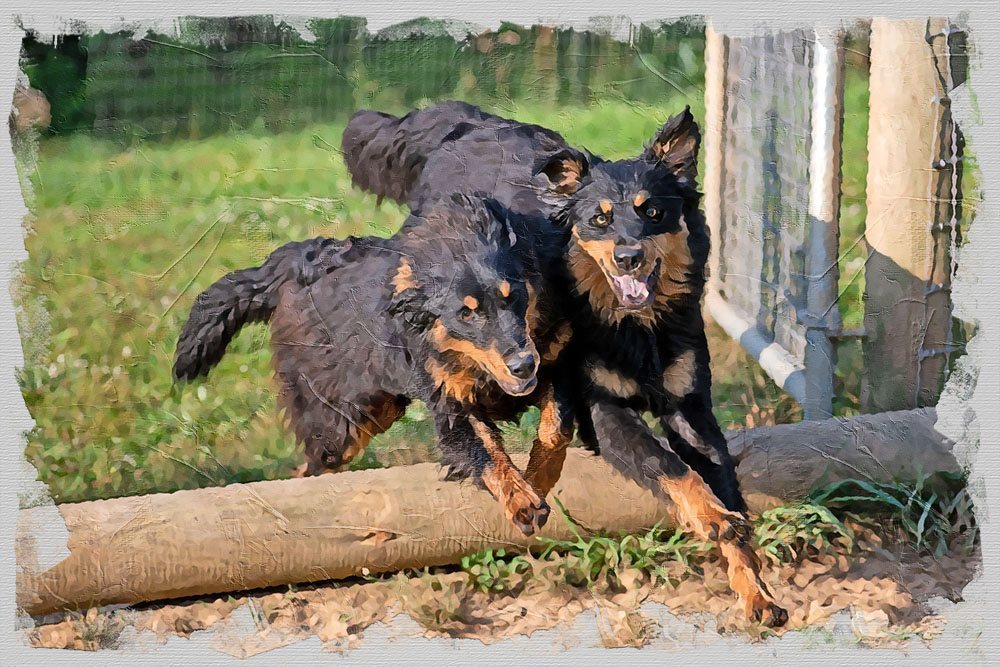The Old-fashioned Black and Tan English Shepherd Association strides to preserve a specific type of dog. We use three investigations as determining factors.
Our first investigation is appearance and behavior (phenotype). We use the Blankenship Bloodline Standard as the barometer for this investigation. This same standard of the Old-fashioned Black and Tan English Shepherd has been around, virtually unchanged, for decades. It was initially written by Tom Stodghill, founder of the English Shepherd Club of America. John and Pauline Blankenship later revised the bloodline standard. It is published online here:
The second way we classify an Old-fashioned Black and Tan English Shepherd is historically by pedigree. The preferred Old-fashioned Black and Tan English Shepherd has nothing but black and tan dogs in his or her pedigree. Ideally, the pedigree will go all the way back to black and tan dogs who were registered with the IESR or the ARF. There are exceptions. For example, an ancestor 3 generations back who was black and white, so long as all the ancestors since are demonstrably Old-fashioned Black and Tan English Shepherds. Conversely, if a dog’s sire or dam is not a black and tan. That is a composite dog, not an Old-fashioned Black and Tan English Shepherd. In fairness, this is not a cut-and-dried investigation. An Old-fashioned Black and Tan’s three-generation pedigree should be at least 3/4 black and tan. Some of my respected colleagues feel that the pedigree should be entirely black and tan.
Finally, genotype can be used to help with our classification. I’m not an expert on genetics, and this isn’t a post about genetics. So, let’s stay high level for this third investigation. An Old-fashioned Black and Tan English Shepherd will always have two parents who are ‘AtAt’ on the A Locus. And through in-depth research, we know that most of the modern males from the Old-fashioned Black and Tan English Shepherd bloodline are of two possible haplotypes. Those are A1a H1a.48 and A1a H1a.29. The modern females that we’ve tested are A1a A388, A1d A247 and C2 C42/54/55. This is an evolving list, but we’re unaware of any exceptions at this time. You don’t have to be an expert in genetics to use genotype as an investigation. We use Embark Vet DNA data for this investigation. You just have to pay for a test and read the report. Don’t let it intimidate you.
To summarize, three of the most conclusive investigations we can use to classify Old-fashioned Black and Tan English Shepherds are genotype, phenotype, and history. In isolation, any one of these three investigations can be inconclusive. But when all three are used together, we can assert a classification with a reasonable amount of confidence. This last statement is an important point. The most accurate classifications will use all three investigations.
A note on line-crossing. Line-crossing for the purpose of breeding back to the line is an acceptable and even necessary practice. Effective line-crossing uses dogs who are phenotypically similar, but genotypically disparate from the line to be bred back to. But in the broader English Shepherd community, almost no breeders pursue line-crossing for the sake of preserving a bloodline.
The fact is, there’s almost always a waiting list for an Old-fashioned Black and Tan whose worth having. In my experience, folks who have real cultural use and appreciation for the bloodline don’t have a problem waiting for the real thing.


1 thought on “Black and Tan: The Real Thing”
Comments are closed.